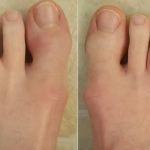NEW YORK (Reuters Health)—In patients with psoriasis and psoriatic arthritis, the incidence of atrial fibrillation and major adverse cardiovascular events does not differ between treatment with ustekinumab and TNF inhibitors, according to a large observational study.
“Given a high cardiovascular risk among patients with psoriasis and psoriatic arthritis,” Seoyoung C. Kim, MD, ScD, MSCE, told Reuters Health by email, “it is important to understand the potential effect of different treatments on CV risk among these patients.”
And with an increasing number of systemic treatment options, she added, “there is a need for high-quality evidence on comparative safety of different systemic treatments including biologic drugs for a better medical decision making.”
Dr. Kim of Brigham and Women’s Hospital and Harvard Medical School, Boston, and colleagues examined insurance data from 2009 to 2015 involving more than 60,000 patients. Ustekinumab became available in the U.S. in 2009.
Nearly 51,000 patients received TNF inhibitors and 9,071 were given ustekinumab, the researchers report in JAMA Dermatology, online March 27.1 Mean follow-up was 1.4 years.
The overall crude incidence rate for atrial fibrillation per thousand patient-years was 4.7 for TNF inhibitors and 5.0 for ustekinumab. For major adverse cardiovascular events, the numbers were 6.1 and 6.2, respectively.
Compared with TNF inhibitors, the combined adjusted hazard ratios for incident atrial fibrillation and major adverse cardiovascular events among ustekinumab initiators were 1.08 and 1.10, respectively, neither of which was statistically significant.
“Furthermore,” the researchers write, “these risks did not appear to substantially differ across the subgroups included in our study.”
The researchers called for further research in subgroups, but concluded “the current study provides [cardiovascular] safety data from an important head-to-head comparison (two most commonly used categories of biologic drugs for the conditions) in a real-world setting.”
Robert T. Brodell, MD, chair of the department of dermatology at the University of Mississippi Medical Center, Jackson, tells Reuters Health by email, “As with any new drugs, physicians are always worried about benefits and risks. The biologics used in treating psoriasis, as a class have proven to be very safe, especially when compared to the drugs with used systemically for psoriasis in the pre-biologic era (methotrexate, cyclosporine and acitretin).”
Dr. Brodell, who was not involved in the study, adds that there are indications that major adverse cardiovascular events and atrial fibrillation may be related to certain biologic drugs. Thus, “it is comforting to know that ustekinumab and anti-TNF drugs have the same low risks of these side effects.”


